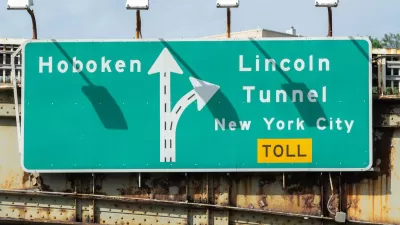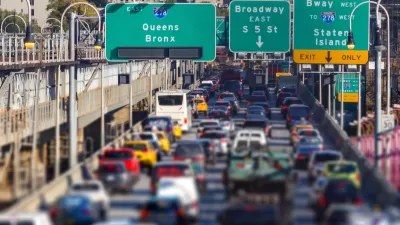Eric Jaffe reports on research that may give pause to light rail advocates who argue the mode can reduce congestion: ridership gains along new lines may come at the expense of buses, rather than cars.
"One of the main justifications for building a light rail line is the hope that it will reduce traffic congestion in a corridor, presumably by drawing commuters out of their cars and onto the train," writes Jaffe. "When we last looked at this assumption, about a year ago, we found cautious support for the decongestive value of light rail corridors in Denver. While traffic continued to rise in these corridors, it rose even more in nearby areas without the rail."
"A similar new study of British light rail systems comes away far less hopeful. In an upcoming issue of the Journal of Transport Geography, planners Shin Lee and Martyn Senior of Cardiff University found that the evidence for light rail reducing car use is unclear. Lee and Senior discovered that car ownership and car commute share often continue to rise in these corridors, and that ridership growth is often the result of travelers shifting over from buses — not cars."
After studying the travel habits of those living within four UK light rail corridors completed from 1991 to 2001, compared to four control areas, "the researchers had a hard time concluding that the light rail systems, taken together, produced much of a shift away from car commuting."
"In the end," adds Jaffe, "the researchers caution against expecting major long-term reductions in road congestion after the creation of a light rail system."
FULL STORY: Does Light Rail Really Encourage People to Stop Driving?

Planetizen Federal Action Tracker
A weekly monitor of how Trump’s orders and actions are impacting planners and planning in America.

Maui's Vacation Rental Debate Turns Ugly
Verbal attacks, misinformation campaigns and fistfights plague a high-stakes debate to convert thousands of vacation rentals into long-term housing.

Cuomo Is the Candidate of Both NIMBYs and Developers. What Gives?
In the New York City mayoral race, odd bedfellows align to preserve the housing status quo.

Amtrak Rolls Out New Orleans to Alabama “Mardi Gras” Train
The new service will operate morning and evening departures between Mobile and New Orleans.

The Subversive Car-Free Guide to Trump's Great American Road Trip
Car-free ways to access Chicagoland’s best tourist attractions.

San Antonio and Austin are Fusing Into one Massive Megaregion
The region spanning the two central Texas cities is growing fast, posing challenges for local infrastructure and water supplies.
Urban Design for Planners 1: Software Tools
This six-course series explores essential urban design concepts using open source software and equips planners with the tools they need to participate fully in the urban design process.
Planning for Universal Design
Learn the tools for implementing Universal Design in planning regulations.
Heyer Gruel & Associates PA
JM Goldson LLC
Custer County Colorado
City of Camden Redevelopment Agency
City of Astoria
Transportation Research & Education Center (TREC) at Portland State University
Jefferson Parish Government
Camden Redevelopment Agency
City of Claremont





























